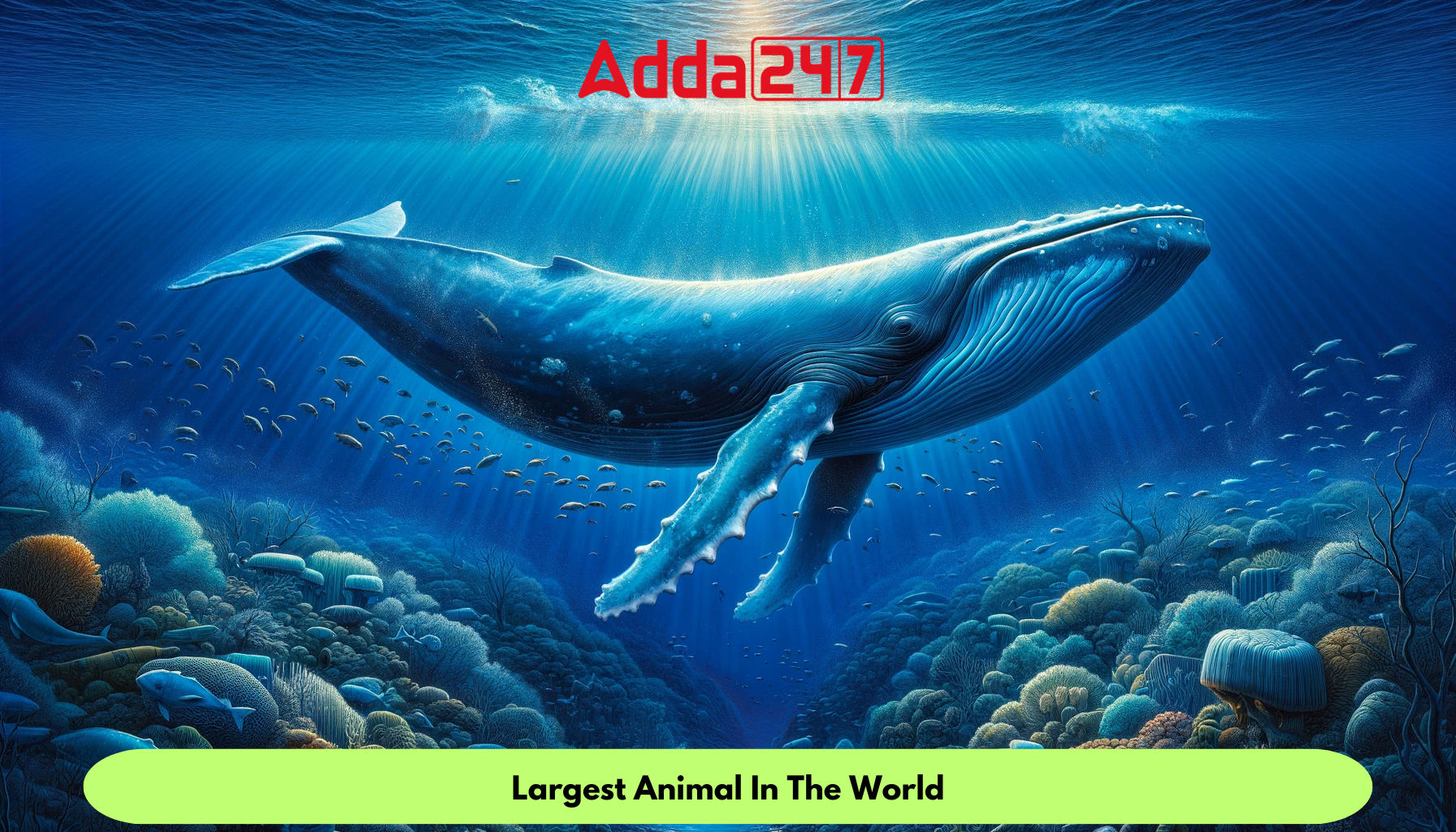Largest Animal In The World: Earth is home to a diverse array of creatures, but when it comes to sheer size, one species stands out above all others—the magnificent Blue Whale. As the largest animal on the planet, the Blue Whale captivates the imagination with its colossal size, remarkable adaptations, and crucial role in the marine ecosystem.
I. The Blue Whale’s Physical Dimensions:
The Blue Whale, scientifically known as Balaenoptera musculus, holds the title of being the largest animal ever known to exist. Adult Blue Whales can reach lengths of up to 100 feet (30 meters) or more, with the females generally being larger than males. These marine giants can weigh as much as 200 tons, dwarfing even the largest dinosaurs that once roamed the Earth.
II. Habitat and Distribution
Blue Whales are found in oceans across the globe, and their distribution spans both polar and tropical waters. They are known to migrate thousands of miles, traveling between feeding and breeding grounds. Commonly sighted in the Southern Hemisphere, the Antarctic and surrounding areas serve as important feeding habitats, while warmer waters are preferred for breeding.
III. Feeding Behavior
Despite their massive size, Blue Whales are gentle filter feeders. Their primary diet consists of tiny shrimp-like animals called krill. Using baleen plates in their mouths, Blue Whales filter vast amounts of water, trapping krill and other small organisms. A single adult Blue Whale can consume several tons of krill each day during the feeding season.
IV. Conservation Status
Despite their awe-inspiring presence, Blue Whales have faced significant threats from human activities. Historical whaling practices severely depleted their populations, leading to international conservation efforts to protect these majestic creatures. Today, the Blue Whale is classified as endangered, and various conservation initiatives focus on mitigating threats such as ship strikes, ocean noise pollution, and climate change impacts on their habitats.
V. Unique Adaptations
The Blue Whale has evolved several adaptations to thrive in its marine environment. Its streamlined body and powerful tail enable it to move efficiently through the water. The iconic dorsal fin is relatively small compared to body size. Additionally, the whale’s heart, about the size of a small car, pumps an astounding amount of blood—up to 220 gallons (832 liters) per beat.
VI. The Symphony of Blue Whale Communication
Blue Whales communicate through a series of low-frequency vocalizations, often referred to as “songs.” These songs, believed to play a role in mating rituals and long-distance communication, can travel across vast distances in the ocean. The complexity of these vocalizations adds another layer to the mystery and allure of these incredible marine creatures.




 Who is Bhushan Ramkrishna Gavai? Know Ab...
Who is Bhushan Ramkrishna Gavai? Know Ab...
 Which Indian State is the Largest Bauxit...
Which Indian State is the Largest Bauxit...
 Which Indian State is Known as the Land ...
Which Indian State is Known as the Land ...

